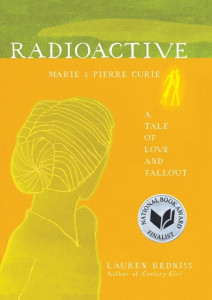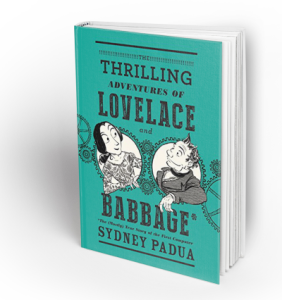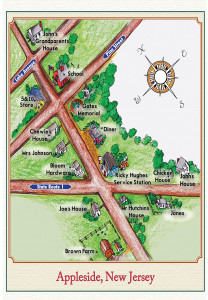Connie B. Dowell's Blog
April 11, 2023
October 27, 2021
New Release for Halloween!
My story is #3, "The Vanishing Witch." New witch Poppy Ashfield is nervous about attending her first witches' potluck... and it goes even worse than she fears when one of the witches dissappears. Can she find the culprit and the disappeared woman?
Enjoy six stories from six different cozy mystery authors. Pour a cup of piping hot apple cider and snuggle under a blanket with this read.
August 18, 2016
Episode 16: Lovelace and the Curies, Two Graphic Novels
Welcome back to One Hundred Centuries! In our first full-length episode in a while, we 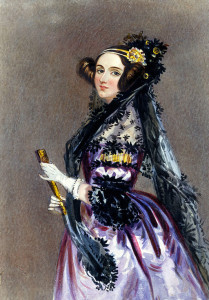 discuss/review two graphic novels about historical scientists: The Thrilling Adventures of Lovelace and Babbage (by Sidney Padua) and Radioactive (by Lauren Redniss). Have a listen as we talk about Ada Lovelace and Charles Babbage and Marie and Pierre Curie, the graphic novel form and the interesting ways these two books engage with history.
discuss/review two graphic novels about historical scientists: The Thrilling Adventures of Lovelace and Babbage (by Sidney Padua) and Radioactive (by Lauren Redniss). Have a listen as we talk about Ada Lovelace and Charles Babbage and Marie and Pierre Curie, the graphic novel form and the interesting ways these two books engage with history.
At one point in the discussion, Stephen comments on Padua’s visual depiction of Lovelace. For reference, here is a contemporary portrait of her (on the right.)
Portrait Image Credit: Alfred Edward Chalon [Public domain], via Wikimedia Commons
Save
Save
April 7, 2016
Book Spotlight: Under a Painted Sky and The Cure for Dreaming
It’s back. After a long fall/winter of having a baby and publishing a book, this quick episode is the first of many this spring and summer.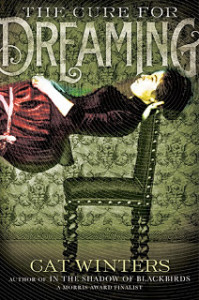
Today I’m spotlighting two teen books set in different historical periods: Under a Painted Sky by Stacey Lee (1840s West) and The Cure for Dreaming by Cat Winters (1900 Oregon). These are great choices for history buff readers, be they teens or adults.
For more information and teacher’s guides, be sure to check out the authors’ websites. They also each have some spring releases coming soon/just released that look fantastic.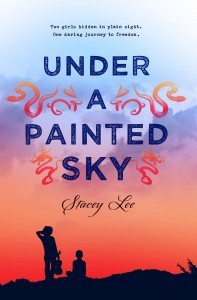
October 22, 2015
Episode Fourteen: The Camera Obscura
This week’s episode is about the camera obscura (A.K.A. the pinhole camera).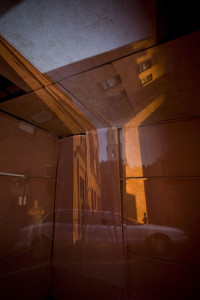 It’s a fun and historical device used by astronomers and artists. You can even make one yourself for safe eclipse viewing.
It’s a fun and historical device used by astronomers and artists. You can even make one yourself for safe eclipse viewing.
Also, do check out pictures of Vermeer’s paintings here: Essential Vermeer
Do you think he used a camera obscura to create his art? Does it matter?
Sources:
Hazen, W. A. (1999). Everyday life: Communication. Good Year Books: Parsipanny, N.J.
Patti, T. (2003). Photography: The early stages. PSA Journal. 69 (9), 24.
Steadman, P. (2011). Vermeer and the camera obscura. BBC History. Retrieved from http://www.bbc.co.uk/history/british/empire_seapower/vermeer_camera_01.shtml
Williams, N. (2015). 5 insane theories that change how you see great works of art. Cracked. Retrieved from http://www.cracked.com/article_22358_5-crazy-but-plausible-theories-behind-great-pieces-art_p2.html
Image Credit: Erik Gould, Flickr Creative Commons
October 8, 2015
Episode Thirteen: World War One and the Meaning of Heroism: Interview with Paul Butler
In the third author interview, I talk with Paul Butler about his book, Hero. It’s set partly in World 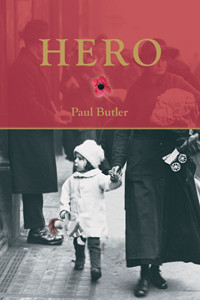 War I and partly in later years as the aftermath of the war affects different characters’ lives. Listen in above or view the interview as a video below.
War I and partly in later years as the aftermath of the war affects different characters’ lives. Listen in above or view the interview as a video below.
Paul has written multiple historical novels. His latest work, The Good Doctor focuses on medical missionaries at the turn of the 20th century. You can find more from him here: https://paulbutlernovelist.wordpress.com/ Writers, be sure to check out his Instant Hook Writing Contest.
And, of course, you can get Hero on Amazon.
September 23, 2015
Episode Twelve: Victory Gardens and Children’s Literature: Interview with Leigh Shearin
Quick announcement: If you try to get in touch with the show over the next few weeks but don’t get a response for a while, it’s because we’ve got a baby due soon and our silence means he came and we are super busy. We’re prescheduling content to come out on a regular schedule, but we may be poor correspondents for a while.
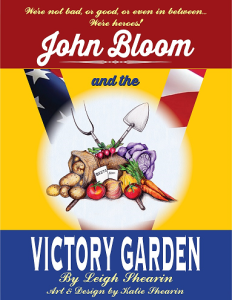 In our second author interview, Leigh Shearin discusses life on the homefront of World War Two and her book for middle grade readers, John Bloom and the Victory Garden. For a fun discussion, have a listen above or see the (somewhat less polished) video below. Leigh also has a sequel coming out in October: John Bloom and the Victory Garden: Digging In.
In our second author interview, Leigh Shearin discusses life on the homefront of World War Two and her book for middle grade readers, John Bloom and the Victory Garden. For a fun discussion, have a listen above or see the (somewhat less polished) video below. Leigh also has a sequel coming out in October: John Bloom and the Victory Garden: Digging In.
Below, you’ll find a few pictures: the cover of the sequel, a map of the fictional town of Appleside, and, of course, an author photo.
You can find out more about Leigh at http://leighshearin.weebly.com/. And you can get the book on Amazon here: http://www.amazon.com/dp/B00OKMZ8G0.
September 10, 2015
Episode Eleven: 1950s Hollywood and Justice Girl: Interview with Julian David Stone
Quick announcement: If you try to get in touch with the show over the next few weeks but don’t get a response for a while, it’s because we’ve got a baby due soon and our silence means he came and we are super busy. We’re prescheduling content to come out on a regular schedule, but we may be poor correspondents for a while.
Today we’ve got our first interview. 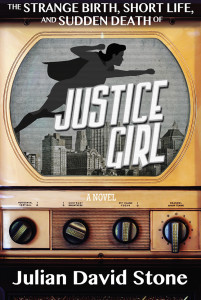 Author Julian David Stone talks about his book, The Strange Birth, Short Life, and Sudden Death of Justice Girl. It’s set in 1950s Hollywood and deals with the live TV filming environment and McCarthyism. Listen in for an interesting discussion. You can also check out the (slightly less polished) video of the interview below, as well as a few photos Julian has provided from ComiCon and other events, including one of him posing with “Justice Girl.”
Author Julian David Stone talks about his book, The Strange Birth, Short Life, and Sudden Death of Justice Girl. It’s set in 1950s Hollywood and deals with the live TV filming environment and McCarthyism. Listen in for an interesting discussion. You can also check out the (slightly less polished) video of the interview below, as well as a few photos Julian has provided from ComiCon and other events, including one of him posing with “Justice Girl.”

Find more from Julian at http://juliandavidstone.com. You can find the book on Amazon.
June 23, 2015
Episode Ten: The Discovery of Pluto
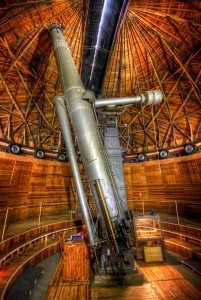 Lowell Observatory
Lowell ObservatoryToday we’ve got some astronomical history for you. The dwarf planet Pluto has had a long and exciting history.
There’s a number of fun further reading/viewing/listening resources if you’d like to learn more about Pluto when you’re done with the episode.
The Planets by Dava Sobel
How I Killed Pluto and Why It Had It Coming by Mike Brown
The Pluto Files by Neil DeGrasse Tyson
We also figured out what the tangentially related Stuff You Missed in History Class episodes (there were two!) were. They’re not about Pluto, but about the moon and the crazy things people used to imagine were crawling around on celestial bodies.
And here’s where you can find new pictures of Pluto and more.
So what do you think? Should Pluto have remained a planet? Do you approve of its dwarf planet status? Is there another, better option?
What do you think? Should Pluto have remained a planet?
Click To Tweet
Image Credit: Michael Wilson, Flickr Creative Commons
May 25, 2015
Episode Nine: Historical Verse Novels from the Kansas Soddy to Vietnam
Today we spotlight two historical fiction verse novels for middle grade readers (ages 8 to 12, though many older readers may enjoy them just as much). Both stories feature strong-willed girls with different language 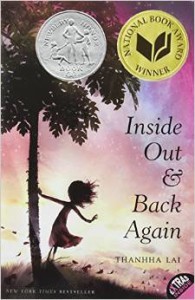 barriers who emerge from their tales more confident and resilient. MAY B. by Caroline Starr Rose tells the story of a 12-year-old girl in 1870s Kansas who struggles with dyslexia and finds herself stranded alone in a sod house as winter approaches. INSIDE OUT AND BACK AGAIN by Thanhha Lai is inspired by the author’s own experiences fleeing Vietnam during the fall of Saigon and relocating to Alabama. The book’s heroine, Hà describes the fear and joy of living in Saigon before the fall, life on the fleeing navy vessel, two refugee camps and the culture shock of moving to a completely foreign land and learning a new language.
barriers who emerge from their tales more confident and resilient. MAY B. by Caroline Starr Rose tells the story of a 12-year-old girl in 1870s Kansas who struggles with dyslexia and finds herself stranded alone in a sod house as winter approaches. INSIDE OUT AND BACK AGAIN by Thanhha Lai is inspired by the author’s own experiences fleeing Vietnam during the fall of Saigon and relocating to Alabama. The book’s heroine, Hà describes the fear and joy of living in Saigon before the fall, life on the fleeing navy vessel, two refugee camps and the culture shock of moving to a completely foreign land and learning a new language.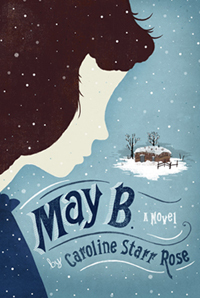
For those who want to learn more or share these books with young people in their lives, I suggest visiting the following websites:
Pronunciation guide for Thanhha Lai’s name
Discussion guide for INSIDE OUT & BACK AGAIN
Goodreads list of middle grade verse novels
New Goodreads list of historical fiction verse novels (Since we didn’t find one to link to for you all, we started one of our own. Please visit and add your own favorite historical fiction verse novel for any age range to the list.)

